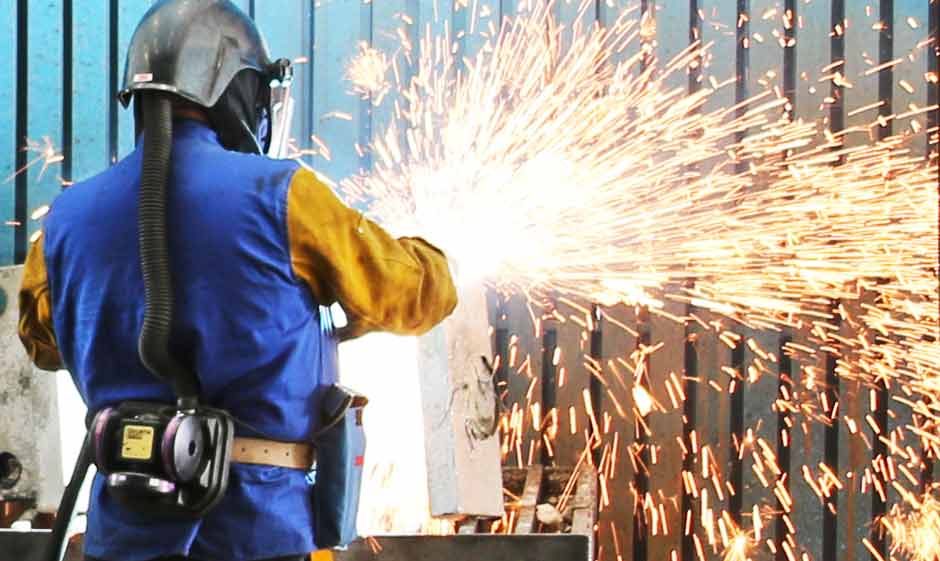On-Site Air Quality Measures Protect Our Valuable Workers
Ensuring employee safety is critical work here at Columbia Steel. Not only does that involve protecting our workers from injury while they’re on the job, but it also includes mitigating health risks from exposure to materials. In a foundry environment, these risks could come from the dust and smoke generated through welding, burning, and melting steel. However, we’ve taken great strides to improve on-site air quality through sound practices.
A Multi-Pronged Approach
Our air-safety efforts take a variety of forms, depending on the tasks our workers perform. Regardless of the modality, they all work to provide our employees with clean, breathable air wherever they are on site. Here are a few examples.
Dust Collectors
One of the most effective tools we have for capturing emissions is a series of baghouses scattered throughout our plant. Baghouses are essentially dust collectors and filters we install in any area where workers perform production work. We have dozens of these devices installed in critical areas where welding, burning, melting, and sand mixing take place to capture dust and keep smoke out of the air. As a result, our employees breathe cleaner air while they work.
Working Booths
Employees that work with hexavalent chrome or manganese steel need an added layer of protection beyond our baghouses. For this, we’ve installed enclosed booths where employees work. This technology offers better protection by circulating the air inside the booth across a filtration system that catches any smoke. The booths also protect other people by limiting the amount of smoke that spreads into the larger work environment.
Sealed Respirators
Most of the tasks our employees undertake don’t require a respirator. However, in certain circumstances, we supply workers with their own purified air to breathe. Our arc air operators and burners use a supplied-air respirator (SAR), which is a welding helmet that converts compressed air into breathing air. These units include an attachment that allows the operator to adjust the air temperature going into the unit to make them more comfortable.
In certain circumstances, regulations only require welders to wear a half-face respirator under their welding hood. However, we choose to supply more expensive SARs because sealed respirators are more comfortable and protect the wearer better than half-face respirators.
Material Changes
We’ve opted for materials that protect employee health. Our principal binding agents for sand include water, clay and corn cereal. We do our best to purchase products that contain low quantities of silica and have identified areas where we can reduce employee exposure in our production areas. We also conduct annual air sampling to monitor personal exposure levels and mitigate where needed.
Furnace Melting
Our furnace department is working on engineering solutions to improve smoke collection from the materials we melt, protecting our employees and the environment. Crane operators working high above the foundry floor are also at risk of breathing smoke rising out of the furnace. To combat this, we added HEPA filters to all our crane cabs.
Constantly Improving
Of course, providing effective employee safety measures requires us to constantly refine our methods and seek out new technology whenever we can. We recently consulted with an outside engineering firm for an independent review of our smoke collection procedures. They provided recommendations, and we’re currently making improvements to many of our production processes to keep health risks low.
We’re also working on administrative and engineering controls that maximize current protections. For example, opening dampers where individuals will be working and closing them where people aren’t working maximizes airflow and provides an additional layer of protection. By refining our processes and developing improved standard operating procedures, we’re looking to make these kinds of improvements throughout our operation.
A Proactive Safety Approach
Employee safety is an outlook more than a process. Instead of simply checking boxes and fulfilling government mandates, we take a proactive approach and constantly search for the next improvement we can make. We believe this makes Columbia Steel a safer place to work and provides a higher standard of protection for the employees we value so much.
